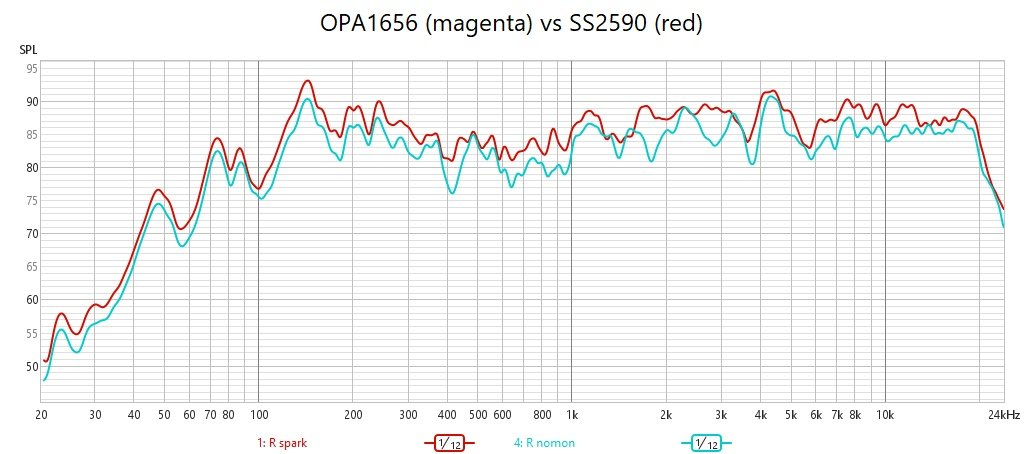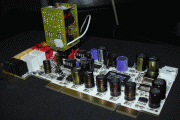murrays
100+ Head-Fier
- Joined
- Jan 10, 2009
- Posts
- 302
- Likes
- 42
Quote:
Yes, thanks. I have been working through a lot of those issues over the past few months with my amp. Bypass caps are soldered on the underside of the PCB, directly to the pins. Choosing the right input resistors definitely helped. Pretty much everything you mention has been done - and a few more. It helps having an old oscilloscope to hand to see if there's oscillations.
It goes against logic to get "a bad feeling" about the lack of shielding on the Browndogs when each extension cable to those discrete modules uses nearly a metre of wire.
| Originally Posted by diditmyself /img/forum/go_quote.gif I've never seen an adapter with shield. Opamps don't have ground pins. I guess you could connect a shield to one of the rails. Is this how it's done in the metal can opamps? I've just ordered some of those cheap SOIC to DIP adapters from Hong Kong. The traces are much shorter and look sturdier than Browndogs. If usual care is taken with decoupling caps as close to the power pins as possible, short feedback path, an input resistor and maybe an input filtering cap, I think you'll be fine. The use of an output resistor and/or a zobel network make the amp more stable driving capacitive loads. The use of a compensation cap when needed, or choosing "the right" value for feedback resistors also increase stability. |
Yes, thanks. I have been working through a lot of those issues over the past few months with my amp. Bypass caps are soldered on the underside of the PCB, directly to the pins. Choosing the right input resistors definitely helped. Pretty much everything you mention has been done - and a few more. It helps having an old oscilloscope to hand to see if there's oscillations.
It goes against logic to get "a bad feeling" about the lack of shielding on the Browndogs when each extension cable to those discrete modules uses nearly a metre of wire.
































